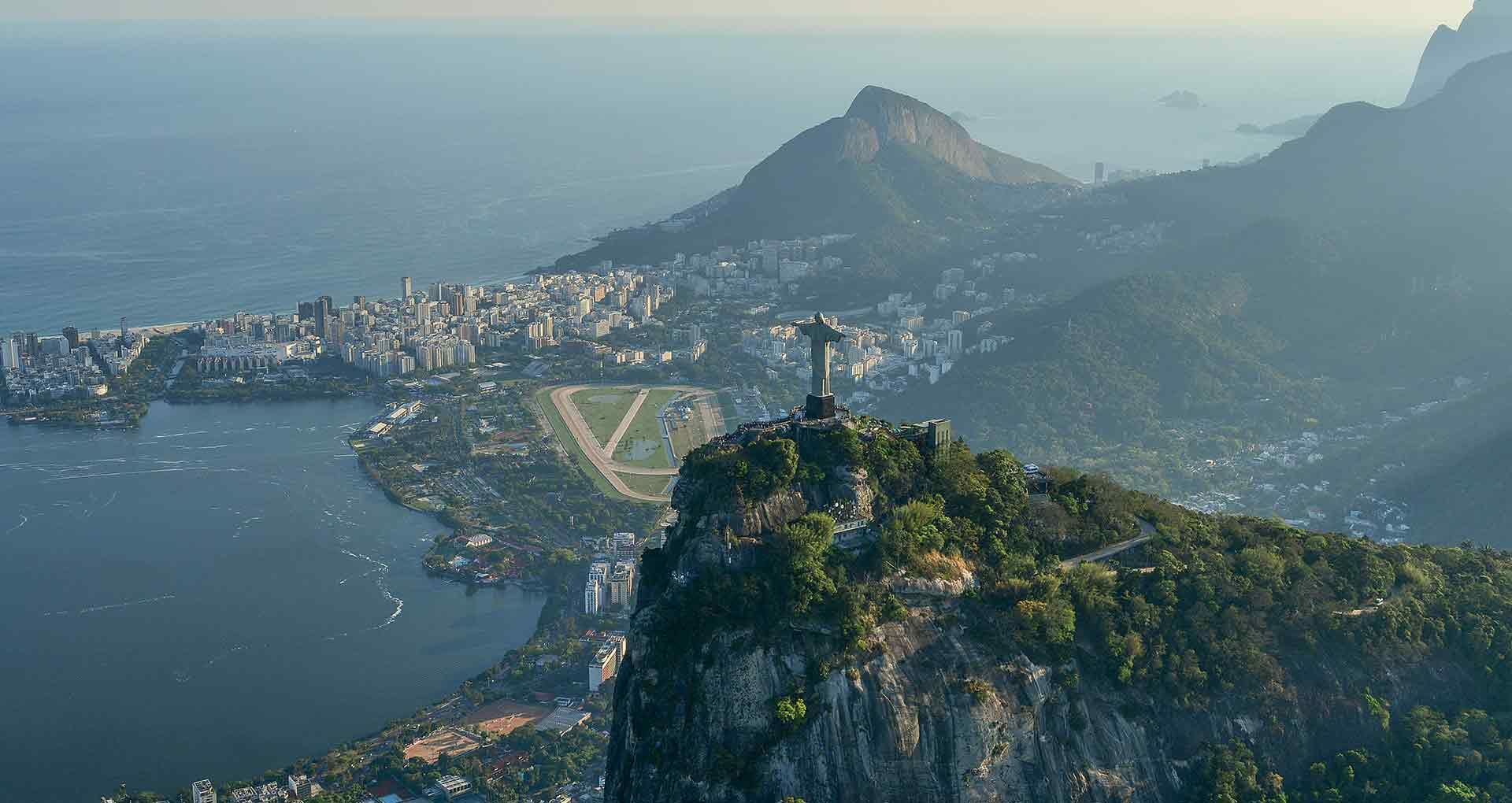Why is economic measurement vital to the success of long-term investors and society in a post-COVID-19 world?
For the last three years, L1 has been sponsoring research at Bennett Institute of Public Policy, University of Cambridge, into natural, social, and human capital – economic assets, which form part of what is known as the wealth economy.
The funding from L1 has enabled the Cambridge Wealth Economy Team to join the global network of over 600 scientists, economists, national statisticians, and accounting experts who have contributed to the development of a new UN Statistical Standard, which includes the contributions of nature when measuring economic prosperity and human wellbeing. This measure would ensure that natural capital – forests, wetlands, and other ecosystems – are recognised in economic reporting.
The new framework shines a spotlight on the crucial services generated by ecosystems and how they benefit people and business.
In essence, ecosystems are assets, and as with all capital, whether they are maintained or degraded will determine future output. For example, healthy trees and forests play a role in purifying air and water, reducing climate change, and mitigating floods – all of which benefit communities and businesses. Employees are more productive, supply chains more reliable, communities richer, and extreme weather events rarer and less costly when nature flourishes.
As the UN said – the adoption comes at a time when climate change continues its relentless march and the world is on track to reach new highs of warming, climbing to at least 3°C above pre-industrial levels by 2100.
According to the World Meteorological Organization, 2020 was in a dead heat to be one of the three warmest years on record, and 2011–2020 was the warmest decade on record, with the warmest six years all being since 2015. The loss of biodiversity and ecosystem integrity, together with climate change and pollution, will undermine our efforts on 80% of the Sustainable Development Goal targets.
In order to explain the importance of this development, we spoke to Matthew Agarwala, who is the project leader at Cambridge driving the research.
Q: I’m going to ask a basic question to start with: what is natural capital? Why is it important?
A: Natural capital includes water, air, soil, natural resources, and living things that provide the basic building blocks of life and what we consume as businesses.
It is an essential ingredient in the recipe for economic progress. But of all our assets – physical, human, financial – natural capital is the only one in continuous decline worldwide.
As populations grow and become more affluent, we consume more. If environmental degradation continues at the same rate, we will need two planets by 2030 to fuel our consumption. It’s unsustainable. It’s important because economic growth predicated on depleting natural capital, without replacing it, is not sustainable and harms future generations. We need to change the way we think and value natural capital, which we currently take for granted.

Q: Since natural capital underpins all economic activity, why have markets been so slow to catch on? Why don’t we invest more for nature?
A: Most of nature’s contributions to business, people, and the economy are not traded in markets. We don’t buy and sell flood protection in the supermarket; we don’t trade clean air on the stock exchange. This makes them invisible in transaction data, on balance sheets, and in GDP statistics. The result is that these contributions are overlooked in discussions about business and economic strategy.
Accounts are a bit like a resume: what they reveal is interesting, but what they conceal is critical. Natural capital accounts reveal the economy’s impacts and dependencies on nature.
For instance – if we looked just at the woodlands’ component of natural capital in the UK, we’d see that they generate around £275m pa when harvested for timber – and that shows up in the data. But woodlands do so much more than provide timber. They trap and absorb toxic pollutants (avoiding health costs of around £938m pa), sequester carbon (18m tonnes/yr, or around 4% of UK greenhouse gas emissions, worth about £1.2bn pa), help reduce floods, reduce noise pollution, and contribute to temperature regulation and recreation. At over £3bn/yr, their annual economic contributions outside the market are about 12 times greater than their contributions inside the market.
Examining these income flows over time, we see that if we focus on just the market (timber) contributions, woodlands had an asset value of about £8.9bn in 2017. But if we include the wider suite of benefits, this grows to £129.7bn in 2017.
This is a story that plays out over any number of different ecosystems – woodlands, highlands, beaches, and oceans. For a business to be sustainable economically and resilient, it needs to know – from a natural capital perspective – what it consumes as part of its process in the pursuit of profit – and what it returns.
Q: We all feel that the weather is becoming more volatile but what has natural capital to do with climate change?
A: A stable climate system is central to strong natural capital. It is degraded by greenhouse gas emissions and interacts with all other assets, including ecosystems and human capital. Sometimes there is confusion, even tension, between climate and nature.
Essentially, the climate system should be considered a part of natural capital – an important part, but just a part. Natural capital is much broader and includes ecosystems, biodiversity, and water resources.
It’s an important distinction. Unfortunately, sometimes what makes great carbon policy makes terrible biodiversity, land use, or water policy. We see this, for instance, where hydropower dams along the Mekong destroy sensitive river ecosystems (on which millions rely for food), or where growing crops for biofuels drives deforestation.

We need businesses to understand that climate and broader environmental change has consequences. For instance, emerging diseases like COVID-19, SARS, MERS, Ebola, and even HIV, are driven by biodiversity crises rather than climate change. We need investment strategies that tackle both simultaneously.
As we have seen this year, particularly in Texas, extreme weather events are now more frequent due to climate change and even rich countries can suffer. Increasing greenhouse gas (GHG) emissions are putting the world and businesses at risk.
Q: How do we know where climate change damage might occur?
A: In terms of assessing what and where that climate change damage might occur, we, with colleagues at the London School of Economics, have noticed a disparity of impacts between currently colder countries such as Canada, Russia, and Northern Europe and warmer regions that have recently been severely damaged by extreme weather, like Australia and Brazil.
These warmer countries are being beaten up by natural disasters even though they account for relatively small amounts of CO2 emissions. For instance, Brazil’s production based emissions are only 1.3% of the global total, yet it is expected to suffer 14%–30% of the global damages from climate change. Australia accounts for just 1.3% of global CO2 production, yet is on track to experience between 12 and 24 times more damage from climate change than the world per capita average. From a business perspective, this is important to know.
Q: With COP26 on the horizon, how might your team’s work be useful for finance assessing climate change risk?
A: Private finance is going to be a central player in either meeting – or failing to meet – net zero targets and wider environmental goals. The scale of investment needed means governments cannot do this alone. We must crowd-in private investment and mobilise capital markets to deliver environmental as well as economic returns.
Markets need credible, digestible information on how climate change translates into material risks. Instead, an explosion of ESG ratings and voluntary, ad hoc, unregulated climate disclosures has created a confusing world of unfamiliar, incomparable, and conflicting metrics.
A key concern is the yawning gap between what climate science and economic models tell us on the one hand, and what metrics are available to assess financial risks on the other.

Q: How might we close that gap?
A: To close the gap between climate science and climate finance, we combined AI with climate economics and S&P’s sovereign ratings formula to hardwire climate science into assessments of sovereign creditworthiness.
We have created the world’s first climate-smart sovereign rating. We’ve found strong evidence of climate-driven sovereign downgrades as soon as 2030 for countries all around the world (hot and cold, rich and poor). These downgrades impact the cost of sovereign and corporate debt, and our approach lets us calculate their respective increases in annual interest payments.
We believe this is unique and will lead to a paradigm shift in management of bond portfolios, the perception of risk, and the trading of sovereign debt.
Q: That’s amazing. You are also studying other capital measures to replace GDP as part of this wealth economy study. What are you looking at? Why is this important for business?
A: What’s extraordinary is that as businesses you live and die by the balance sheet, but nations don’t even compile them of their socio-economic assets. So how can businesses judge the real “health of an economy” before they invest in a company whose growth is dependent on it?
We believe that an index that assesses the wealth economy rather than just GDP will provide businesses and politicians with a more comprehensive understanding of modern economies.
We are all aware of the pace of political, economic, and technological change today. It’s this pace of change that makes the measurement of social and institutional capital even more important.
New technologies such as AI, machine learning, biotechnologies, big data, and automation create both opportunities and challenges. Managing all these changes will require social, economic, and political institutions that can mitigate the losses whilst maximising the gains.
Q: What do businesses need to look at?
A: We believe that business leaders will get much more insight into the long-term capacity of the economy to deliver sustained growth and improve living standards for the benefit of all by looking at the following six fundamental socio-economic assets:
- Natural capital, which is a measurement of the resources and services provided by nature.
- Intangible assets, such as intellectual property and data bases.
- Human capital, the accumulated skills and the physical and mental health of citizens.
- Social and institutional capital.
- Physical assets and produced capital, including access to infrastructure and new technologies.
- Net financial capital available to the economy.
Our hope is that this new measurement system will help address many of today’s pressing social, economic, and environmental challenges, reduce political and economic volatility and help businesses in their investment decisions too.


